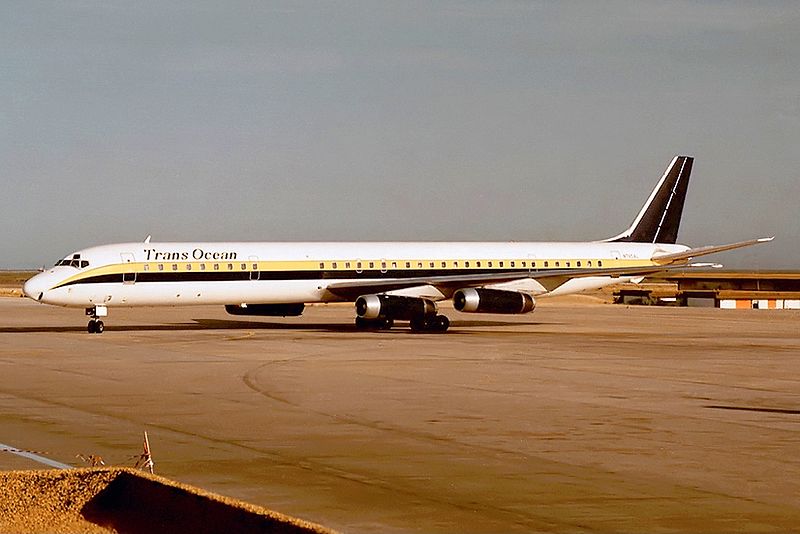Transocean Airways – A Look Back – Part Two- April 10, 2020

Transocean Airways – A Look Back – April 3, 2020
April 5, 2020
Transocean Airways Part Three – April 17, 2020
April 19, 2020RN3DB
April 10, 2020
Good Morning and welcome back—This week we continue with our story on Transocean….A great airline…a great company. Enjoy………………………
TRANSOCEAN AIR LINES
On the morning of March 16, 1946, the first flight departed for Honolulu in one of the leased C-54s. The ATC wanted the airplane to be in position in Honolulu to ferry to the U.S. mainland a load of military personnel returning from the South Pacific theaters of war on March 18, which was Nelson’s thirty-ninth birthday. This was the inaugural flight of the ATC contract calling for two round trips daily between Hamilton Field, California, and Hickam Field, Hawaii. At the controls was Captain Jerry Byrd, a former Navy pilot. In the right seat was Jack Brissey, who had been one of the Air Corps’ famous “Wilmington Warriors,” the ferrying group for domestic and transatlantic flights during the war. Art Bisset, former Air Corps flight engineer, who had trained pilots in B-17s ‘and B-24s during World War II, was the flight engineer. Bisset’s meticulous attention to detail would later earn him the position of chief inspector for the airline. Ralph Lewis, violinist in the Lawrence Welk Orchestra before the war and a former radio broadcaster, was the radio operator. Al Mays, ONAT’s first chief navigator, a soft-spoken southerner with a penchant for being precise in his calculations, was tabbed for that first flight. Ten days after the historic first flight of ONAT, Nelson flew to New Jersey to marry Edith Frohboese, a petite blonde United Air Lines stewardess. Less than two hours after the wedding ceremony, the newlyweds were headed for California on a cross-country honeymoon by train.
Esther Lavagnim, an attractive, dark haired, twenty-two year old girl, was the first secretary of the airline. Esther came for her job interview dressed in an eye-catching black and white checked suit, high heels, and a wide brimmed black hat. She was greeted by a chorus of whistles and appreciative comments by the young aviators waiting outside the door. Before many days had passed, Patricia Olesten and Vivian Sims were hired. Patricia’s job was to type statistical reports; Vivian was to be Nelson’s private secretary for many years.
Transocean is Born…
ONAT was profitable from the start. In Just two months the company netted nearly $70,000. But because income tax rates for individuals were high and as Nelson had no extraordinary expenses to write off, he decided to incorporate. A contest was held to name the new corporation. Ray Foster, a dispatcher at the headquarters, submitted the winning name. ONAT became Transocean Air Lines on June 1, 1946.
Nelson immediately sold $200,000 worth of stock and gave one percent to each department head and to the loyal members of the Okinawa group. His only personal outlay of cash was $1,000 down payment for a $25,000 insurance policy for his employees. During the first months of operation, maintenance work was subcontracted to the Air Transport Division of the Matson Navigation Company at Oakland Airport. But with the quick growth of Transocean, the corporation was able to secure quarters in a large hangar vacated by MATS and took over its own maintenance by the end of July. Nelson had a clear concept of what was required of an airline to succeed in the post-war years: a carrier capable of supplementing and assisting the scheduled airlines; one with a high load factor, maximum utility and no frills; plus a system to secure return loads when needed in order to keep rates generally lower than other carriers. With this vision, Nelson and his team decided to enter the commercial contract field with company owned aircraft. At the end of World War II, military surplus airplanes were available for purchase by veterans from the War Assets Administration of the U.S. government at a fraction of their real worth. Veterans Ray T. Elsmore and William L. Word, representing Transocean Air Lines, were among the first to receive their C-54s. Ownership of the four-engined transports would later be registered with the CAA in Transocean’s, name. Ted Vinson, Bill Word, and Jim McCoy flew aircraft N66635 and N66644 from Walnut Ridge, Arkansas and Albuquerque, New ‘Mexico, to a modification center in Southern California for CAA conversion from military to commercial configuration and for certification. By the time these two airplanes were purchased, Transocean was flying twelve government-leased planes on the San Francisco-Honolulu run.
With the arrival of the first two C-54s at Transocean’s headquarters in Oakland, California, TAL began its rapid ascent into sunny skies. Several years would pass before Nelson would reflect on the irony that Transocean, conceived during a raging storm, would pass through innumerable squalls in its corporate life and end by being engulfed in a predatory tidal wave.
At its height, the Transocean organization included 10 companies, making it the first aviation conglomerate. The airline itself employed 2.200 persons. Including the personnel of its subsidiary companies, the total number exceeded 6,700. Transocean’s gross annual sales climbed as high as 50 million dollars and by April 1958, after 12 years of business, Transocean’s aircraft had flown a total of 1,290,966,900 passenger miles, 126,990,642 cargo ton-miles, and 66,828,237 aircraft miles – the equivalent of more than 135 round-trips to the moon!
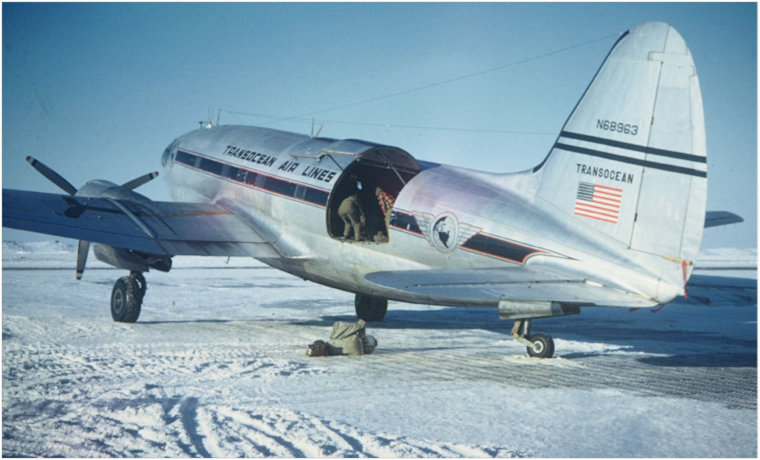
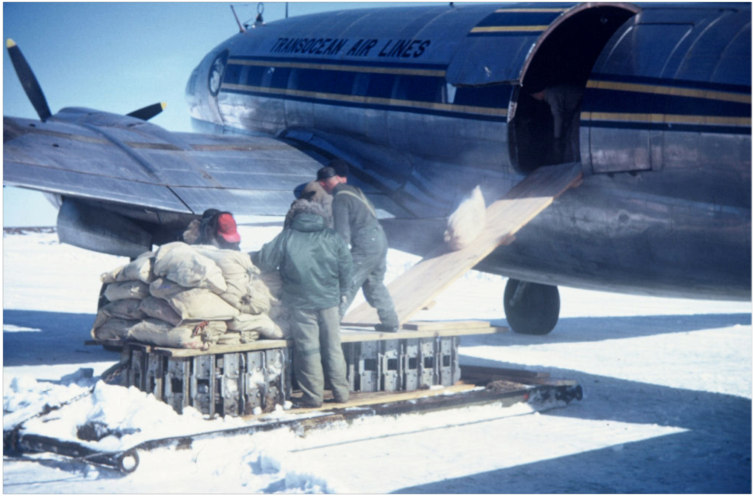

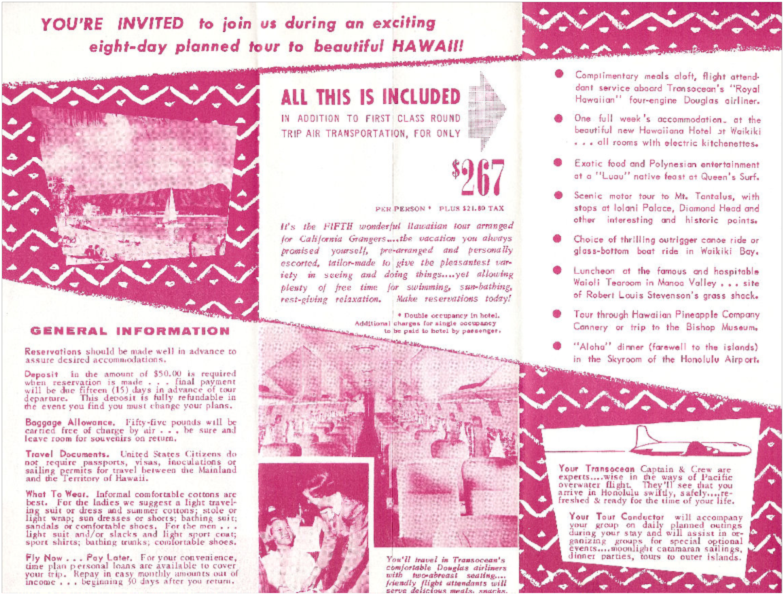
Transocean’s first commercial contract was a round-trip charter between the U.S. mainland and the Philippines in June 1946, not long after the start of the ATC contract. Nelson negotiated with a Filipino newspaper publisher, a Dr. Yap, to fly to Manila a group of his countrymen who wanted to participate in the first Independence Day activities on the Fourth of July 1946. But the modification center in Van Nuys, California was unable to finish on schedule the conversion from cargo to passenger configuration of either of Transocean’s two aircraft. As a consequence, TAL lost the job. The Philippine contingent had to find its own transportation to Manila. With help from Washington, D.C., most were able to hitch rides on ATC planes.
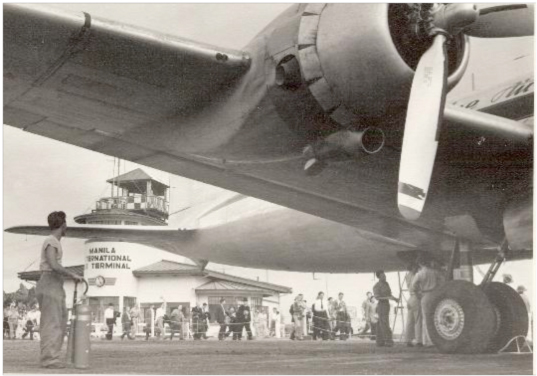
c
Source Document (Article and Photos)
That is it for this week. Have a good weekend, keep friends and family close, and remember to join us again next week as we continue our story on Transocean.
Robert Novell
April 10, 2020


